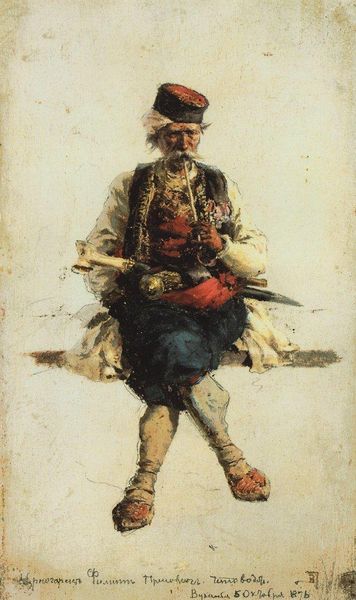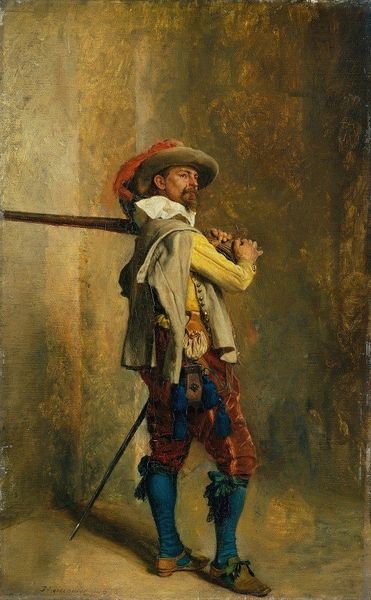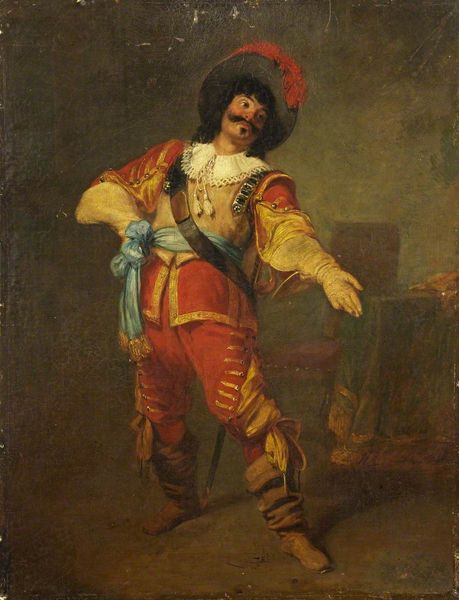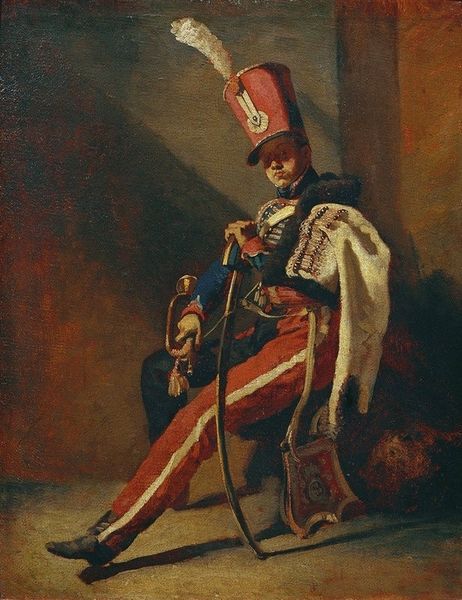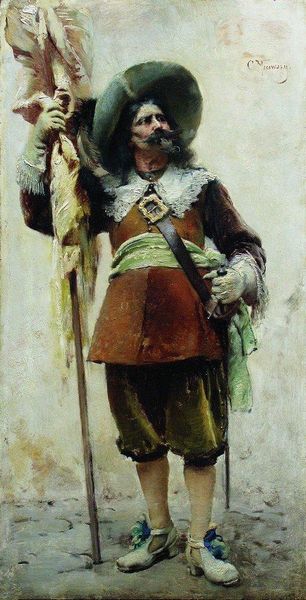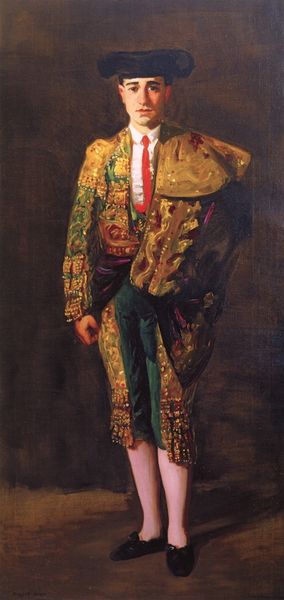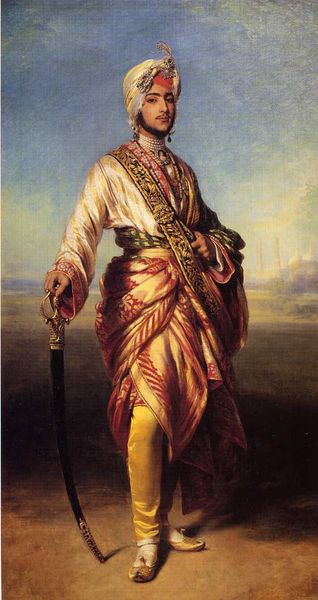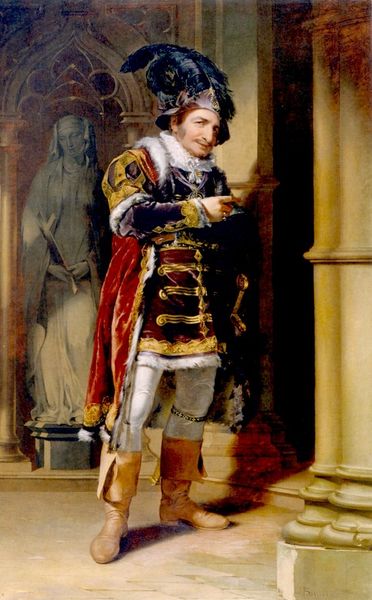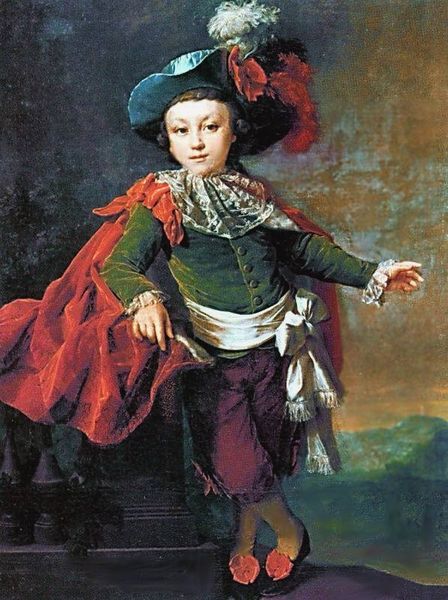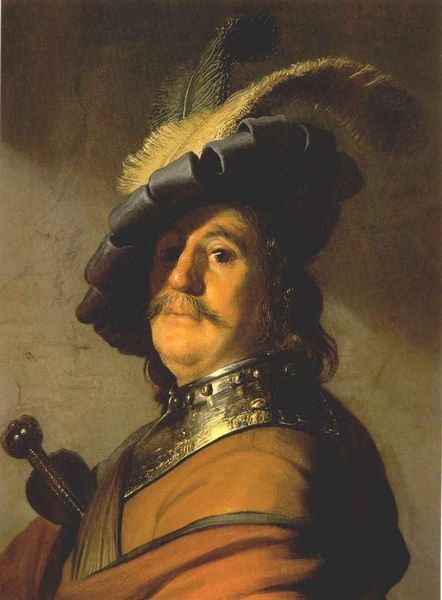
Copyright: Public domain
Editor: We are looking at "Chevalier, arraying gloves," an 1890 oil painting by Konstantin Egorovich Makovsky. I’m struck by the texture – how the light seems to catch on the fabrics and the figure’s elaborate wig. It looks so tactile. What visual elements stand out to you? Curator: Formally, I’m interested in how the painter uses color. Note the deep reds and golds offset by the bright white of the gloves and wig. This limited palette creates a striking visual contrast that commands the viewer’s eye. And consider the brushwork. Notice the looseness of the strokes, particularly in the background. How does this impasto contribute to the overall effect? Editor: It gives the painting a sense of movement and energy, even though it's a portrait. I initially saw the dark background as plain, but the loose brushwork now looks more deliberate. I now appreciate that these painterly strokes are vital. Curator: Precisely. The dynamism inherent in those brushstrokes serves to enliven an otherwise conventional composition. Observe, too, the play of light and shadow across the Chevalier's face and attire. Light serves to define form and highlight detail, while shadow shrouds other aspects. Do these sharp contrasts serve a rhetorical function within the painting? Editor: You've certainly sharpened my appreciation for the textures, composition and brushwork, transforming what initially struck me as a straightforward historical image into something far more intricate. Curator: Indeed, appreciating a painting's formal elements allows for a much more informed interpretation.
Comments
No comments
Be the first to comment and join the conversation on the ultimate creative platform.
